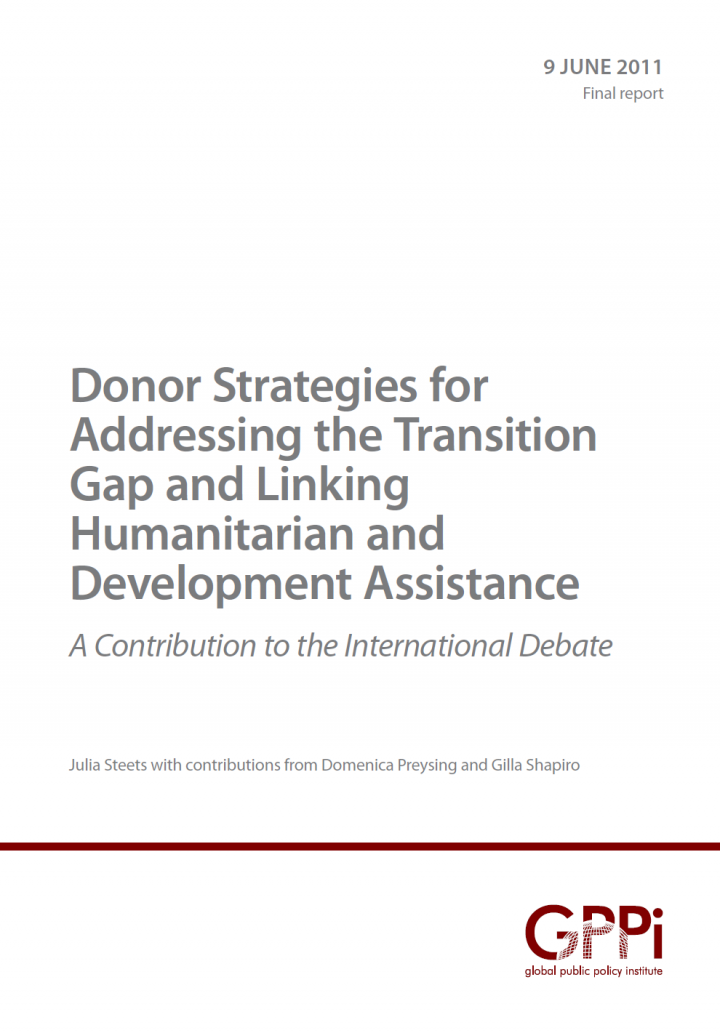Donor Strategies for Addressing the Transition Gap and Linking Humanitarian and Development Assistance - A Contribution to the International Debate
Steets, J. (2011)

Published in: 2011
Pages: 69
Publisher:
Global Public Policy Institute (GPPi)
Author:
Steets, J.
Uploaded by:
SuSanA Admin
Partner profile:
common upload
791 Views
1 Downloads
Humanitarian assistance and development cooperation pursue different aims and follow different principles. Their separation – while important to protect the independence of humanitarian action – has negative side effects. This paper seeks to contribute to the international debate by clarifying concepts, analyzing these effects and exploring donor strategies for addressing them.
The state of the debate
The paper first defines the subject area – the main forms of aid, as well as the different concepts used to describe and encourage links between them. Relief aims at saving lives and mitigating suffering, targets populations affected by emergencies, is based on the humanitarian principles of humanity, independence, impartiality and neutrality and most often provides assistance directly or works through civil society. Recovery constitutes the grey area that aims at recreating pre- or non-emergency situations, targets populations affected by emergencies,
applies development principles as far as the humanitarian principles allow and has a preference for working through local communities and local government. Development, in turn, aims at improving the social and economic situation, targets societies as a whole, follows the principles of ownership, alignment, results and mutual accountability and preferably works through national and local governments. Several concepts have been developed to analyze the disconnect between these forms of assistance. They include “developmental relief” or “development-relief”, “linking relief, rehabilitation and development (LRRD)” and “early recovery”.
While the concepts vary in their emphasis, they highlight three aspects of linking:
(1) applying development principles early on in emergency settings to ensure the ground for development is prepared;
(2) ensuring a smooth transition as well as continuity and coordination between interventions on the ground; and
(3) using development cooperation to support prevention and disaster risk reduction.
Bibliographic information
Steets, J. (2011). Donor Strategies for Addressing the Transition Gap and Linking Humanitarian and Development Assistance - A Contribution to the International Debate. Global Public Policy Institute (GPPi)
Filter tags
English Politicians and local decision makers Practitioners














